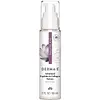What's inside
What's inside
 Key Ingredients
Key Ingredients

 Benefits
Benefits

 Concerns
Concerns

No concerns
 Ingredients Side-by-side
Ingredients Side-by-side

Water
Skin ConditioningGlycerin
HumectantCamellia Sinensis Leaf Extract
AntimicrobialPropanediol
SolventHydroxypropyl Cyclodextrin
MaskingPalmitoyl Tripeptide-38
Skin ConditioningAcetyl Hexapeptide-8
HumectantMicrocrystalline Cellulose
AbsorbentCellulose Gum
Emulsion StabilisingPanthenol
Skin ConditioningPinus Pinaster Bark Extract
AntioxidantAcacia Seyal Gum Extract
HumectantAscorbyl Palmitate
AntioxidantTocopheryl Acetate
AntioxidantAllantoin
Skin ConditioningCaprylic/Capric Triglyceride
MaskingEthylhexyl Palmitate
EmollientLeucine
Skin ConditioningTyrosine
MaskingAlanine
MaskingXanthan Gum
EmulsifyingSodium Citrate
BufferingPhenoxyethanol
PreservativeEthylhexylglycerin
Skin ConditioningParfum
MaskingWater, Glycerin, Camellia Sinensis Leaf Extract, Propanediol, Hydroxypropyl Cyclodextrin, Palmitoyl Tripeptide-38, Acetyl Hexapeptide-8, Microcrystalline Cellulose, Cellulose Gum, Panthenol, Pinus Pinaster Bark Extract, Acacia Seyal Gum Extract, Ascorbyl Palmitate, Tocopheryl Acetate, Allantoin, Caprylic/Capric Triglyceride, Ethylhexyl Palmitate, Leucine, Tyrosine, Alanine, Xanthan Gum, Sodium Citrate, Phenoxyethanol, Ethylhexylglycerin, Parfum
Water
Skin ConditioningButylene Glycol
HumectantGlycerin
Humectant1,2-Hexanediol
Skin ConditioningNiacinamide
SmoothingCetyl Ethylhexanoate
EmollientHydrogenated Polydecene
EmollientAcrylates/C10-30 Alkyl Acrylate Crosspolymer
Emulsion StabilisingTromethamine
BufferingOryza Sativa Lees Extract
Skin ConditioningLeontopodium Alpinum Extract
Skin ConditioningCalcium Alginate
MaskingPropanediol
SolventHydrolyzed Soy Flour
Skin ConditioningEthylhexylglycerin
Skin ConditioningAgar
MaskingAdenosine
Skin ConditioningTrisodium Ethylenediamine Disuccinate
Synthetic Fluorphlogopite
Caprylyl Glycol
EmollientIron Oxides
Citric Acid
BufferingSodium Benzoate
MaskingPotassium Sorbate
PreservativeBuddleja Davidii Extract
Skin ConditioningThymus Vulgaris Extract
PerfumingTocopherol
AntioxidantWater, Butylene Glycol, Glycerin, 1,2-Hexanediol, Niacinamide, Cetyl Ethylhexanoate, Hydrogenated Polydecene, Acrylates/C10-30 Alkyl Acrylate Crosspolymer, Tromethamine, Oryza Sativa Lees Extract, Leontopodium Alpinum Extract, Calcium Alginate, Propanediol, Hydrolyzed Soy Flour, Ethylhexylglycerin, Agar, Adenosine, Trisodium Ethylenediamine Disuccinate, Synthetic Fluorphlogopite, Caprylyl Glycol, Iron Oxides, Citric Acid, Sodium Benzoate, Potassium Sorbate, Buddleja Davidii Extract, Thymus Vulgaris Extract, Tocopherol
Ingredients Explained
These ingredients are found in both products.
Ingredients higher up in an ingredient list are typically present in a larger amount.
Ethylhexylglycerin (we can't pronounce this either) is commonly used as a preservative and skin softener. It is derived from glyceryl.
You might see Ethylhexylglycerin often paired with other preservatives such as phenoxyethanol. Ethylhexylglycerin has been found to increase the effectiveness of these other preservatives.
Glycerin is already naturally found in your skin. It helps moisturize and protect your skin.
A study from 2016 found glycerin to be more effective as a humectant than AHAs and hyaluronic acid.
As a humectant, it helps the skin stay hydrated by pulling moisture to your skin. The low molecular weight of glycerin allows it to pull moisture into the deeper layers of your skin.
Hydrated skin improves your skin barrier; Your skin barrier helps protect against irritants and bacteria.
Glycerin has also been found to have antimicrobial and antiviral properties. Due to these properties, glycerin is often used in wound and burn treatments.
In cosmetics, glycerin is usually derived from plants such as soybean or palm. However, it can also be sourced from animals, such as tallow or animal fat.
This ingredient is organic, colorless, odorless, and non-toxic.
Glycerin is the name for this ingredient in American English. British English uses Glycerol/Glycerine.
Learn more about GlycerinPropanediol is an all-star ingredient. It softens, hydrates, and smooths the skin.
It’s often used to:
Propanediol is not likely to cause sensitivity and considered safe to use. It is derived from corn or petroleum with a clear color and no scent.
Learn more about PropanediolWater. It's the most common cosmetic ingredient of all. You'll usually see it at the top of ingredient lists, meaning that it makes up the largest part of the product.
So why is it so popular? Water most often acts as a solvent - this means that it helps dissolve other ingredients into the formulation.
You'll also recognize water as that liquid we all need to stay alive. If you see this, drink a glass of water. Stay hydrated!
Learn more about Water